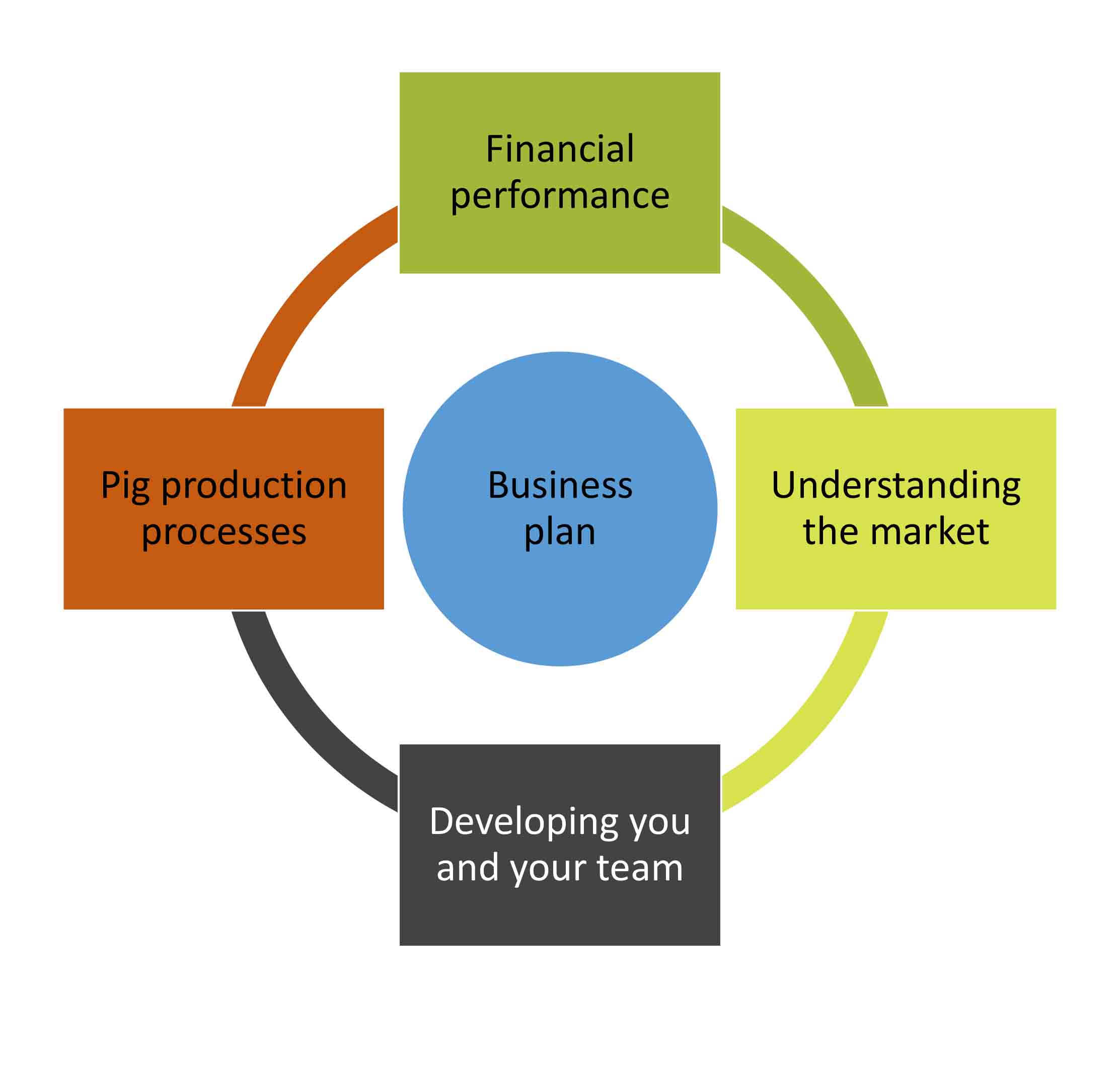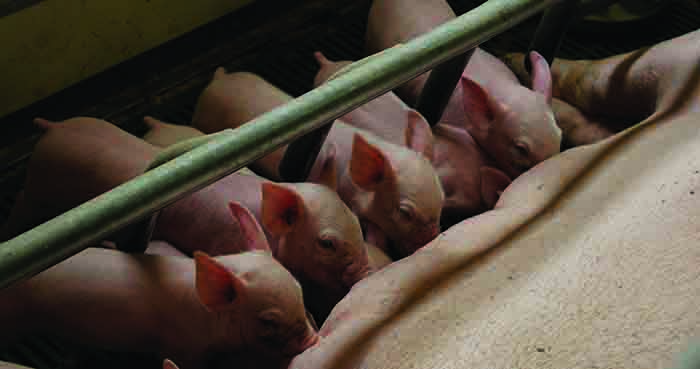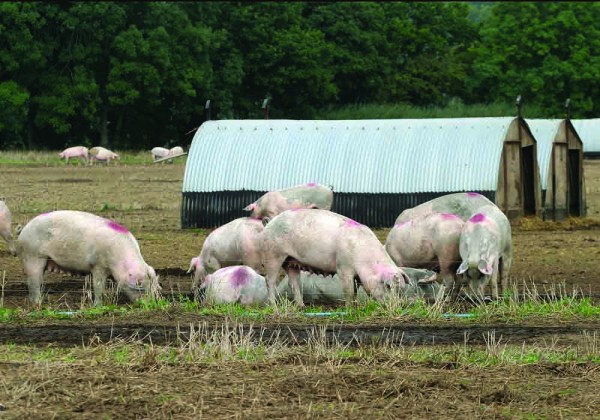It can be difficult for producers to step out of the ‘day-to-day’ routine and know where to start with long-term planning. Here, AHDB offers some guidance and a structure for managing a resilient and profitable business
There are many things we can’t control, such as what will happen with Brexit or world feed prices. What we can control, though, is performance on farm. The aim should be to make our farm businesses as resilient as possible so they are able to ride out the inevitable ‘bumps in the road’ and capitalise when prices are good or new opportunities arise.
It starts with understanding where the business is now and setting long-term goals that go further than the coming year, to the next five years and beyond.
It’s also important to make sure that everyone else knows what they are working towards. Involving different members of the team in the planning process, asking for their ideas and experience, can be really productive and, at the very least, the plan should be shared with everyone once it’s agreed. A clear sense of purpose can be a big motivator for staff at all levels.
CONSIDER WHAT MAKES YOU HAPPY
Personal objectives are important to consider as part of the business planning process – producers should consider what is important to them personally and where they see themselves, as individuals, in the future. They should think about the balance of time versus money they need to do the things that make them happy in their personal lives. They can also ask themselves what they enjoy about pig farming and what they feel they are particularly good at.
When it comes to business objectives, producers should explore where they would like to be in two, five and seven years’ time, in relation to business growth, profitability and succession.

FOUR KEY AREAS
Farm business planning can be broken down into four key areas that need to be balanced. They are: the processes involved in your production, developing you and your team, financial performance and understanding the market.
PIG PRODUCTION PROCESSES
Measuring pig performance and then, importantly, making sure you use that information, is vital if producers want to improve and control production and cost efficiency.
Making improvements doesn’t have to be about heavy capital investment. More often it’s about small gains, doing a range of things well and making ongoing adjustments to processes throughout the farm to make them more efficient.
Outdoor producer Simon Watchorn is continually measuring and reviewing key aspects of performance to refine pig management processes on his unit.
He said: “If you do not measure it, how do you know where you are? How will you work out where you are going and how will you know when you have arrived?

“Recording and monitoring is actually a lot of fun. Once you have identified a problem, tried out an answer and seen the results showing you have solved that problem, it will give you a great sense of achievement.”
He also stressed the importance of being honest with yourself. “As the manager, I am ultimately responsible for what goes right and wrong and identifying where changes can be made. While I rely on the expertise of the vet, nutritionist and genetics company, it is me, the manager, who has oversight of how those key parts of the business are working together in practice on my farm.
“It’s therefore up to me to ask the right questions of suppliers, staff and myself or spot when something isn’t right. Gathering data and comparing it both within and outside your own business is essential to this.”
An example of a key performance indicator (KPI) to monitor progress here could be the cost of production per kilo of pork produced or finisher pig growth rates.
DEVELOPING YOU AND YOUR TEAM
Managers need to give carefully consider how they look after people, including themselves, and put in place routines and training to help staff be as effective as possible. However, it’s important to acknowledge that it can be challenging and stressful managing both pigs and people.
An option for some managers could be to create a new senior role within the team to delegate some of the day-to-day responsibilities to others, allowing them time to take a broader, longer-term view of how things are run.
Developing a staff training programme to encourage retention is also something producers can think about.
Keeping open-minded and taking time to reflect on decisions can reveal areas for improvement that can boost profitability and/or save time in the long run. It might be part of a manager’s own development to look at training or mentoring in things like leadership or time management.
An example of a KPI here could be to measure staff retention over time.
FINANCIAL PERFORMANCE
To manage financial performance, it’s important to look closely at overhead costs. There will always be ways in which producers can tweak and save costs, from getting up-to-date quotes for their feed and diesel from several suppliers, to cancelling that subscription to a magazine they never read.
Goal setting and budgeting is another essential part of business planning. A goal could be about expanding the business or planning reinvestment in buildings and technology. This needs to be broken down into a series of steps towards achieving the goal to be able to plan and budget accordingly.
Proper consideration must be given to routes to expand the herd: this could be through renting land nearby, or purchasing an existing breeding business, for example. This would need careful budgeting to ensure the cost of renting or purchasing land or facilities are cost-effective and the additional work does not impact on the existing business performance.
When budgeting, price sensitivities need factoring in and it’s a good idea to use five- year average prices for income and input costs. Variations in costs are largely based on physical production and performance, which have a direct effect on the business profitability via the gross margins and the overheads. A sensitivity analysis can be done by asking ‘what if?’ questions, such as ‘What if the feed price increases by 10%?’ Or ‘what if sows average 27 piglets sold/ year instead of 30?’
A key performance indicator to help measure financial performance could be the return on capital on monies employed in the business or, if producers are looking to grow their current business and need to borrow, the gearing ratio would be assessed.
UNDERSTANDING THE MARKET
The first area to look at is whether pigs are meeting the specification for the producer’s contract consistently. They should take the time to analyse their abattoir kill sheets over recent months to know exactly how they’re performing.
Knowing exactly what to produce might be a relatively straightforward conversation or it could be highly complex. But recognising what is of greatest value to the buyer is critical to adding value to both parties and to keeping costs down. For example, producers should avoid supplying heavy carcases if the buyer specifies a maximum weight. It costs more to produce heavy and potentially overfat carcases, which can then be costly to trim up.
Further up the chain, producers should be aware of the underlying consumer trends behind demand for their produce, including their views on how pork is produced – for example, are antibiotics being used responsibly?
Producers could focus on a KPI to monitor the number of pigs hitting the optimum contract specification.
More information
Search for AHDB’s information on the characteristics of top-performing farms, by clicking HERE
Find guidance on business planning at: ahdb.org.uk/business-planning
AHDB’s HR Toolkit: pork.ahdb.org.uk/skills-training/human-resources-toolkit/
Access Pig Pro at: pork.ahdb.org.uk/skills-training/pig-pro/





